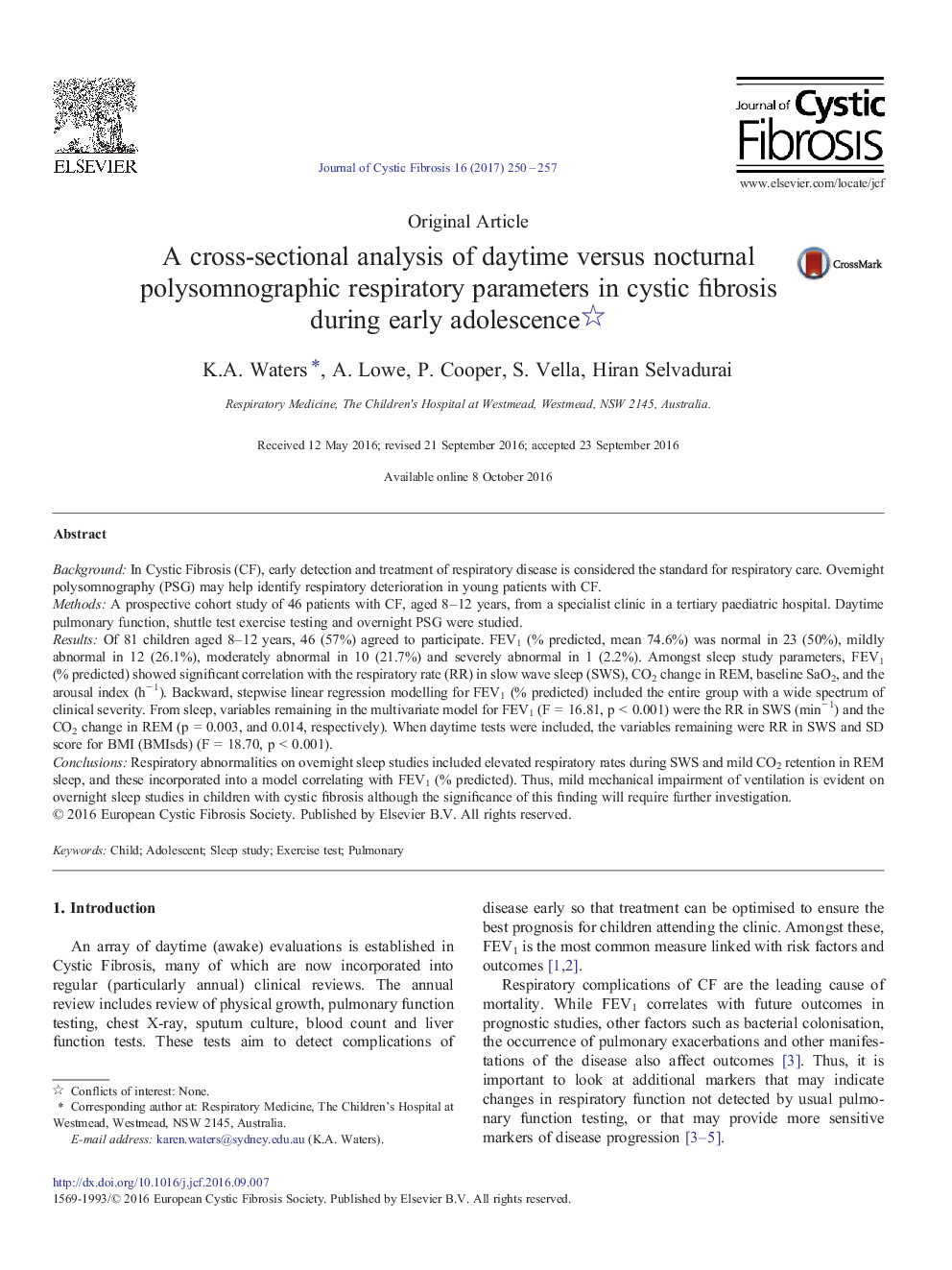| Article ID | Journal | Published Year | Pages | File Type |
|---|---|---|---|---|
| 5724635 | Journal of Cystic Fibrosis | 2017 | 8 Pages |
BackgroundIn Cystic Fibrosis (CF), early detection and treatment of respiratory disease is considered the standard for respiratory care. Overnight polysomnography (PSG) may help identify respiratory deterioration in young patients with CF.MethodsA prospective cohort study of 46 patients with CF, aged 8-12 years, from a specialist clinic in a tertiary paediatric hospital. Daytime pulmonary function, shuttle test exercise testing and overnight PSG were studied.ResultsOf 81 children aged 8-12 years, 46 (57%) agreed to participate. FEV1 (% predicted, mean 74.6%) was normal in 23 (50%), mildly abnormal in 12 (26.1%), moderately abnormal in 10 (21.7%) and severely abnormal in 1 (2.2%). Amongst sleep study parameters, FEV1 (% predicted) showed significant correlation with the respiratory rate (RR) in slow wave sleep (SWS), CO2 change in REM, baseline SaO2, and the arousal index (hâ 1). Backward, stepwise linear regression modelling for FEV1 (% predicted) included the entire group with a wide spectrum of clinical severity. From sleep, variables remaining in the multivariate model for FEV1 (F = 16.81, p < 0.001) were the RR in SWS (minâ 1) and the CO2 change in REM (p = 0.003, and 0.014, respectively). When daytime tests were included, the variables remaining were RR in SWS and SD score for BMI (BMIsds) (F = 18.70, p < 0.001).ConclusionsRespiratory abnormalities on overnight sleep studies included elevated respiratory rates during SWS and mild CO2 retention in REM sleep, and these incorporated into a model correlating with FEV1 (% predicted). Thus, mild mechanical impairment of ventilation is evident on overnight sleep studies in children with cystic fibrosis although the significance of this finding will require further investigation.
